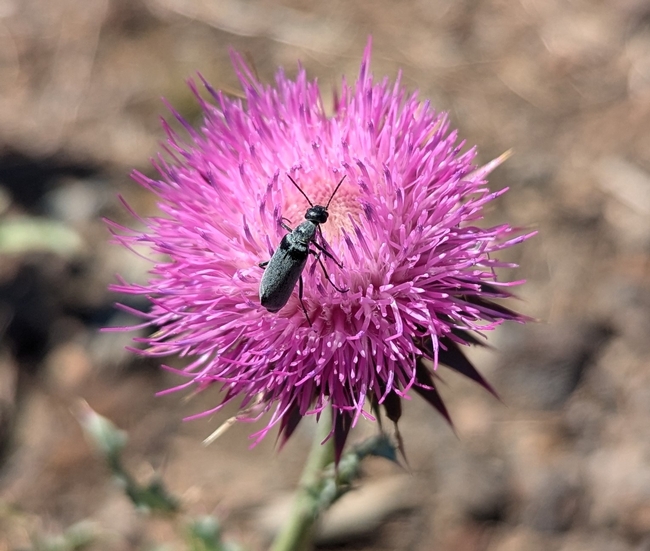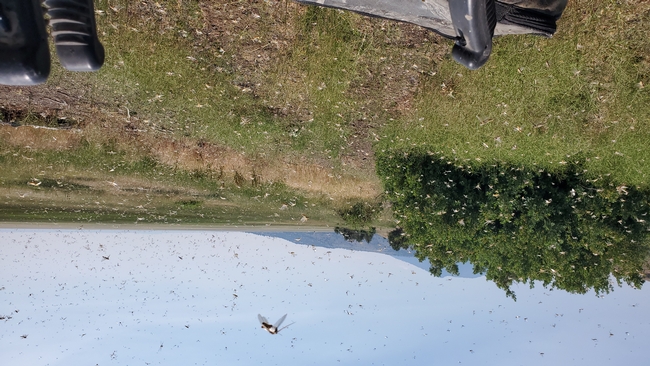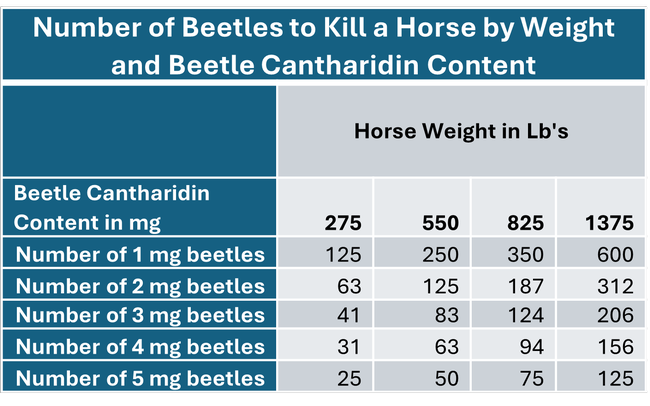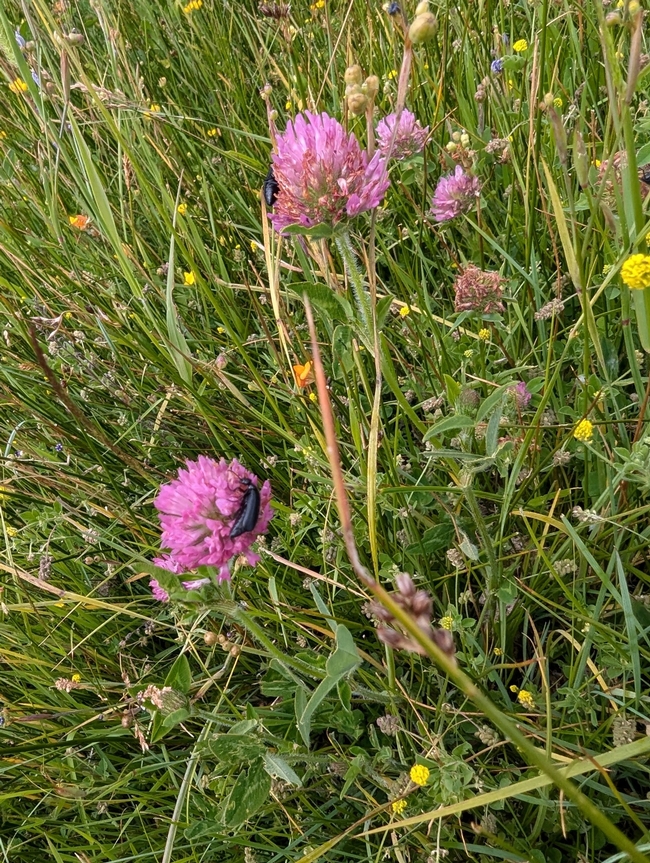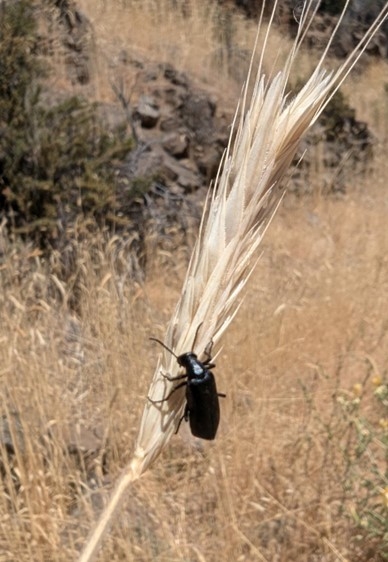I have gotten quite a few calls about blister beetles this year. There was a newspaper article up in Modoc that caused some stir, and was picked up by a lot of social media pages. So, what are blister beetles and why do we care?
Blister beetles get their name for a reason. They contain the toxin cantharidin, which can be excreted when they are threatened, or crushed which causes bad blisters on the skin. While this is problematic they typically are not drawn to humans, and blisters can be avoided by not handling them. Where they pose a larger problem is as a contaminant of hay, where they can be crushed/killed and incorporated into a bale posing as a potential toxin to be consumed by livestock.
Photo One: Blister Beetle on Musk Thistle next to a Roadway
Let's take a step back. What are blister beetles and why are they a subject of conversation now? There are numerous native blister beetles in California. Some are striped, some are brightly colored, but most of the ones I have been seeing are black or grey. The immature larvae of blister beetles feed on the eggs of grasshoppers or ground dwelling bees. I don't have to tell anyone in the Intermountain region, we have had quite a few bad grasshopper years which has led to an increase in blister beetle populations. Typically, the adults lay eggs right on top of the egg beds of grasshoppers. I'd be on the lookout for blister beetles the rest of this year, and definitely next year as they feast on the eggs underground. (So, they are not all bad as they kill some hoppers!).
Photo Two: Grasshoppers flying away from an ATV in a pasture up in Modoc County
As adults, they can consume forage, but typically they are drawn to flowers and consume pollen. (Different species have different preferences.) I have mainly seen them on roadsides, trail sides, and rangelands where there are flowering plants. In hay fields I have only seen them in “native hay pastures” that have wildflowers. However I have gotten reports of them being on the edges of some alfalfa fields that have started to go to bloom.
For livestock generally they are only problematic when they get caught up in a bale. How many is too many? This is a good question. Numerous extension publications cite research done back in the 80's looking at how many blister beetles it would take to kill a horse (horses are more susceptible to the toxin than cattle of sheep). As with all toxin's it often depends on numerous factors, and there is not a single number of beetles that will kill a horse every time. The amount of toxin per beetle can vary by species of beetle as well as within species of beetle. From the research done in the 80's the cantharidin content per beetle ranges from 0.5mg to 5mg, and is toxic to horses at the tune of 1mg/kg. This means that there can be a huge range of how many beetles it will take to kill a horse (see table one). With that being said while it may take a significant number of beetles to kill a horse, as few as five beetles can start to cause colic.
Table one: Adapted from Capinera et al. 1985. J. Econ. Entomol. 78:1052-55.
So, what do you do about the beetles? One of the best things to do is scout fields before they are cut to make sure you do not have them in the field. While it might be counter your management objectives to maximize yield during the mid-season cuttings, cutting alfalfa or clover before bloom can reduce the incentive of beetles to move into hay fields. It is also important the keep a clean hay field, and reduce the number of weeds that may flower in the field drawing the beetles in. There are insecticides like (Sevin- carbaryl, or Warrior- lambda-cyhalothrin) which are effective at killing blister beetles in forages, but may pose their own drawbacks. While most of the beetles should die and fall down to the ground after an insecticide application, there is still some potential for them to be incorporated into the hay during the cutting and raking process. Likewise, the pre harvest intervals for these materials can delay cutting and could require driving over a lot of hay, if an aerial applicator is not available. Cutting around infested patches or isolating/discarding hay that may be contaminated, could be a prudent strategy. Likewise waiting until the beetles move out of the field could be an option.
Photo Three: Blister beetles on clover in a "native" hay meadow in the Intermountian region
There are over 300 species of blister beetles in North America, and not all have been tested for their Cantharidin content. When haying especially using modern equipment with conditioners, I urge you to be cautious, and take time to scout fields before cutting, especially if that hay is going to the horse market.
For more information there are some excellent extension publications online from UCIPM, Colorado State University and North Dakota State.
Photo Five: Blister Beetle on Feral Rye next to the Susan River in Lassen County
